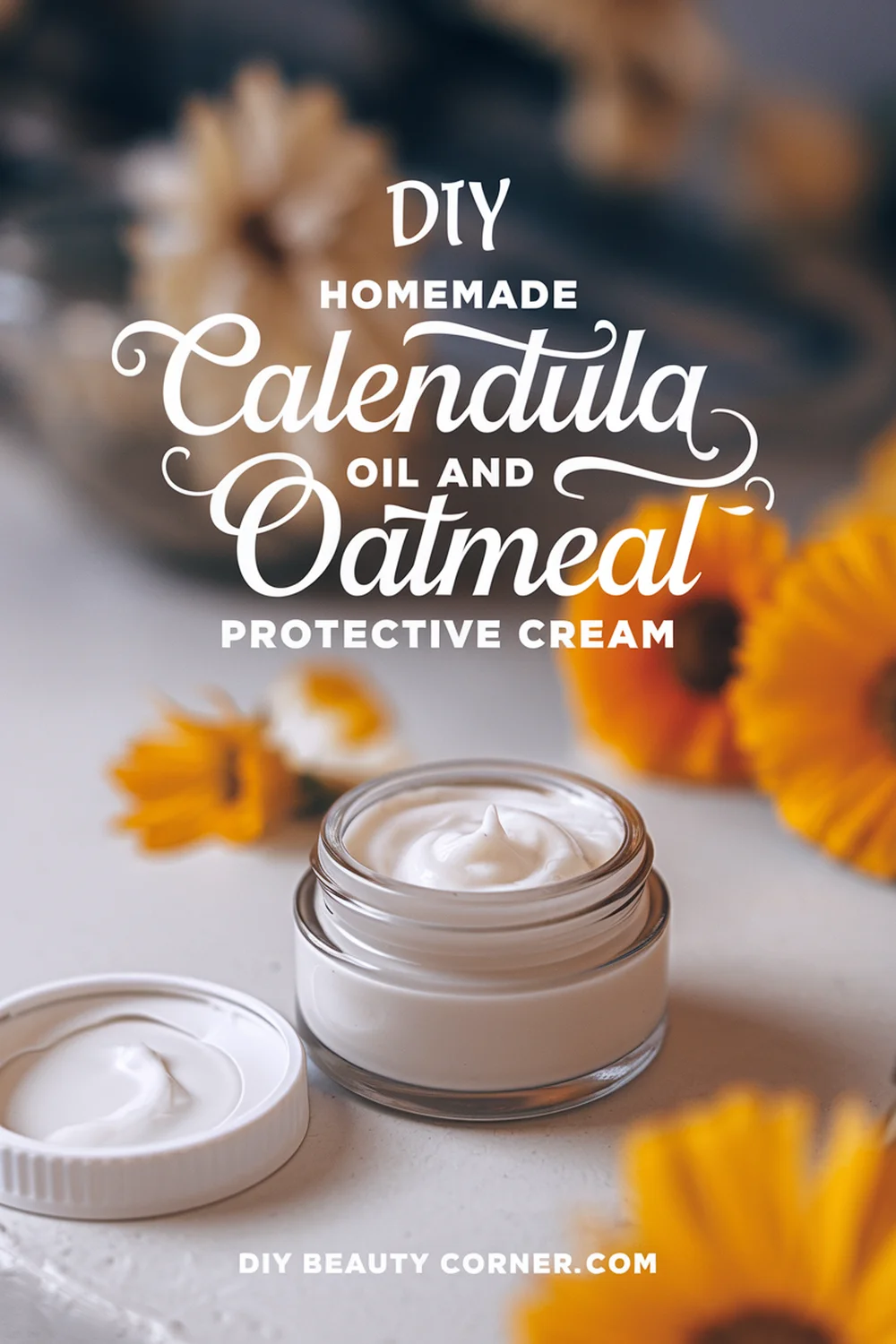
Creating a DIY homemade calendula oil and oatmeal protective cream is a game-changer for anyone dealing with dry skin. Calendula is renowned for its healing properties, making it an ideal base for a moisturizer that not only hydrates but also soothes irritation. This cream combines the nourishing benefits of calendula with the soothing qualities of oatmeal, ensuring your skin stays moisturized and protected from harsh environmental factors.
In this post, I will guide you through the simple steps to create your own calendula oil and oatmeal cream. With just a few ingredients, you can produce a luxurious moisturizer that deeply nourishes your skin and helps maintain its elasticity. Whether you’re looking for relief from dryness or simply want to pamper yourself with a natural skincare solution, this recipe is perfect for you.
Let’s dive into the process and explore how easy it is to make this protective cream at home. By using natural ingredients, I guarantee you’ll feel good about what you’re applying to your skin while enjoying the therapeutic benefits of each component.
Crafting Calendula Oil
Creating calendula oil involves several key steps, from selecting quality flowers to properly infusing and storing the oil. This process allows me to harness the soothing properties of calendula, making it a valuable ingredient for my DIY skincare recipes.
Selecting Quality Calendula Flowers
When choosing calendula flowers, I focus on selecting vibrant, fully opened blooms. Look for organic flowers, as they are free from pesticides and chemicals, ensuring the purity of my oil. Fresh flowers are ideal, but if fresh ones aren’t available, I can use dried calendula.
I prefer flowers that have a bright orange or yellow hue, which indicates they are rich in beneficial compounds. I recommend gathering the flowers on a sunny day after the dew has dried to ensure maximum potency.
Methods of Infusing Calendula Oil
There are a few simple methods for infusing calendula oil, with the cold infusion and hot infusion methods being the most common. For cold infusion, I place the dried flowers in a glass jar and cover them with a carrier oil, such as olive or grapeseed oil, allowing the mixture to sit in a sunny spot for 4 to 6 weeks.
In contrast, the hot infusion method involves gently heating the oil and flowers together on low heat for several hours. I often prefer this method for its faster results. Whichever method I choose, I ensure the oil penetrates the flowers thoroughly for maximum extraction of their healing properties.
Straining and Storing Your Oil
Once the infusion period is over, it’s time to strain the oil. I use a fine mesh strainer or cheesecloth to separate the flower material from the oil. It’s important to extract as much oil as possible, as the infused oil holds valuable nutrients.
After straining, I pour the calendula oil into dark glass bottles to protect it from light and extend its shelf life. Always label the bottles with the date of infusion. Stored in a cool, dark place, my calendula oil can last for up to a year, ready for use in a variety of skin care applications.
Formulating Oatmeal Protective Cream
Creating an oatmeal protective cream is a straightforward process that combines the nourishing properties of oatmeal with calendula oil and other beneficial ingredients. This cream offers hydration and protection for dry skin, making it an essential addition to my skincare routine.
Benefits of Oatmeal for the Skin
Oatmeal is well-known for its soothing properties. It acts as an anti-inflammatory agent, which can help alleviate redness and irritation. Rich in antioxidants, it also provides protection against environmental stressors.
The saponins in oatmeal help cleanse the skin by removing dirt and excess oil without stripping natural moisture. Additionally, it contains beta-glucans, which aid in hydration by forming a protective barrier on the skin. This results in a smoother, more resilient complexion. When incorporated into a moisturizer, oatmeal makes for a potent ally against dryness.
Combining Ingredients
To make this oatmeal protective cream, I start with these key ingredients:
- Calendula oil (1/2 cup): Known for its healing properties, it promotes skin repair.
- Oatmeal (1/4 cup): Finely ground for a smoother texture.
- Shea butter (1/4 cup): Adds richness and deep hydration.
- Beeswax (1/4 cup): Acts as a natural emulsifier and thickener.
- Lavender essential oil (10 drops): Offers a calming scent and additional antibacterial benefits.
In a double boiler, I melt the shea butter and beeswax together until fully combined. Then, I add the calendula oil, stirring gently. Once the mixture cools slightly, I incorporate the finely ground oatmeal and lavender oil, ensuring an even blend. Pouring the mixture into containers while warm allows it to set properly.
Application and Usage Tips
To use my oatmeal protective cream effectively, I start by applying a small amount to clean, dry skin. It’s best to use this cream after bathing or washing my face, as it helps lock in moisture.
I focus on particularly dry areas, like elbows and knees, ensuring even coverage. For smoother application, warming the cream in my hands before use helps it spread easily.
Reapplication throughout the day may be necessary for those with very dry skin. Storing the cream in a cool, dry place extends its shelf life, ensuring that I have a reliable moisturizer on hand whenever needed.


